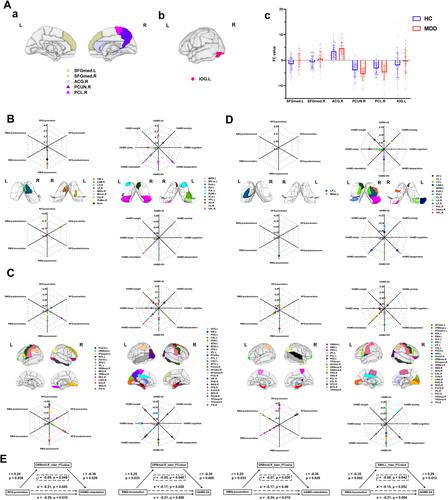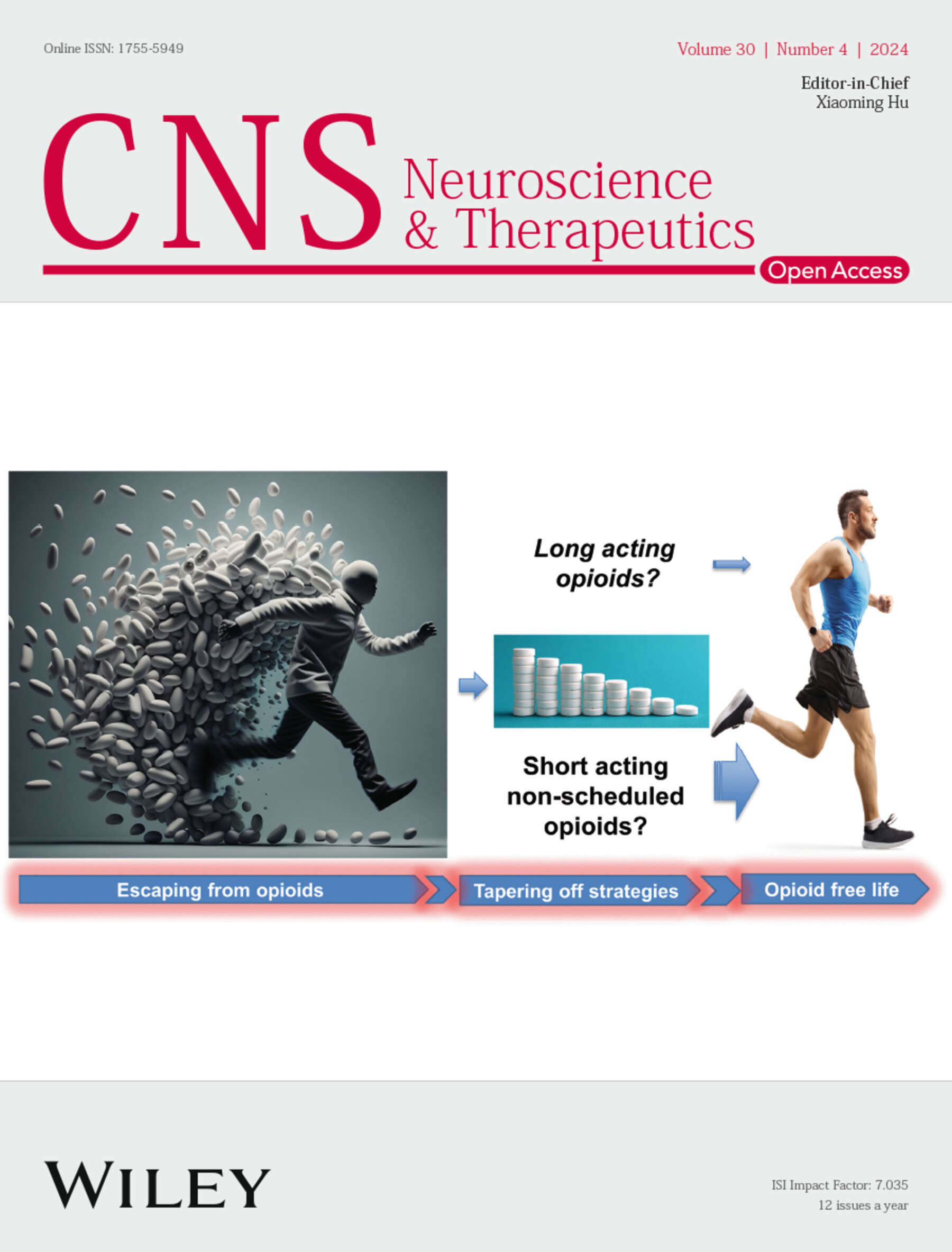Thalamic Volumes and Functional Networks Linked With Self-Regulation Dysfunction in Major Depressive Disorder
Abstract
Aims
Self-regulation (SR) dysfunction is a crucial risk factor for major depressive disorder (MDD). However, neural substrates of SR linking MDD remain unclear.
Methods
Sixty-eight healthy controls and 75 MDD patients were recruited to complete regulatory orientation assessments with the Regulatory Focus Questionnaire (RFQ) and Regulatory Mode Questionnaire (RMQ). Nodal intra and inter-network functional connectivity (FC) was defined as FC sum within networks of 46 thalamic subnuclei (TS) or 88 AAL brain regions, and between the two networks separately. Group-level volumetric and functional difference were compared by two sample t-tests. Pearson's correlation analysis and mediation analysis were utilized to investigate the relationship among imaging parameters and the two behaviors. Canonical correlation analysis (CCA) was conducted to explore the inter-network FC mode of TS related to behavioral subscales. Network-based Statistics with machine learning combining powerful brain imaging features was applied to predict individual behavioral subscales.
Results
MDD patients showed no group-level volumetric difference in 46 TS but represented significant correlation of TS volume and nodal FC with behavioral subscales. Specially, inter-network FC of the orbital part of the right superior frontal gyrus and the left supplementary motor area mediated the correlation between RFQ/RMQ subscales and depressive severity. Furthermore, CCA identified how the two behaviors are linked via the inter-network FC mode of TS. More crucially, thalamic functional subnetworks could predict RFQ/RMQ subscales and psychomotor retardation for MDD individuals.
Conclusion
These findings provided neurological evidence for SR affecting depressive severity in the MDD patients and proposed potential biomarkers to identify the SR-based risk phenotype of MDD individuals.


 求助内容:
求助内容: 应助结果提醒方式:
应助结果提醒方式:


